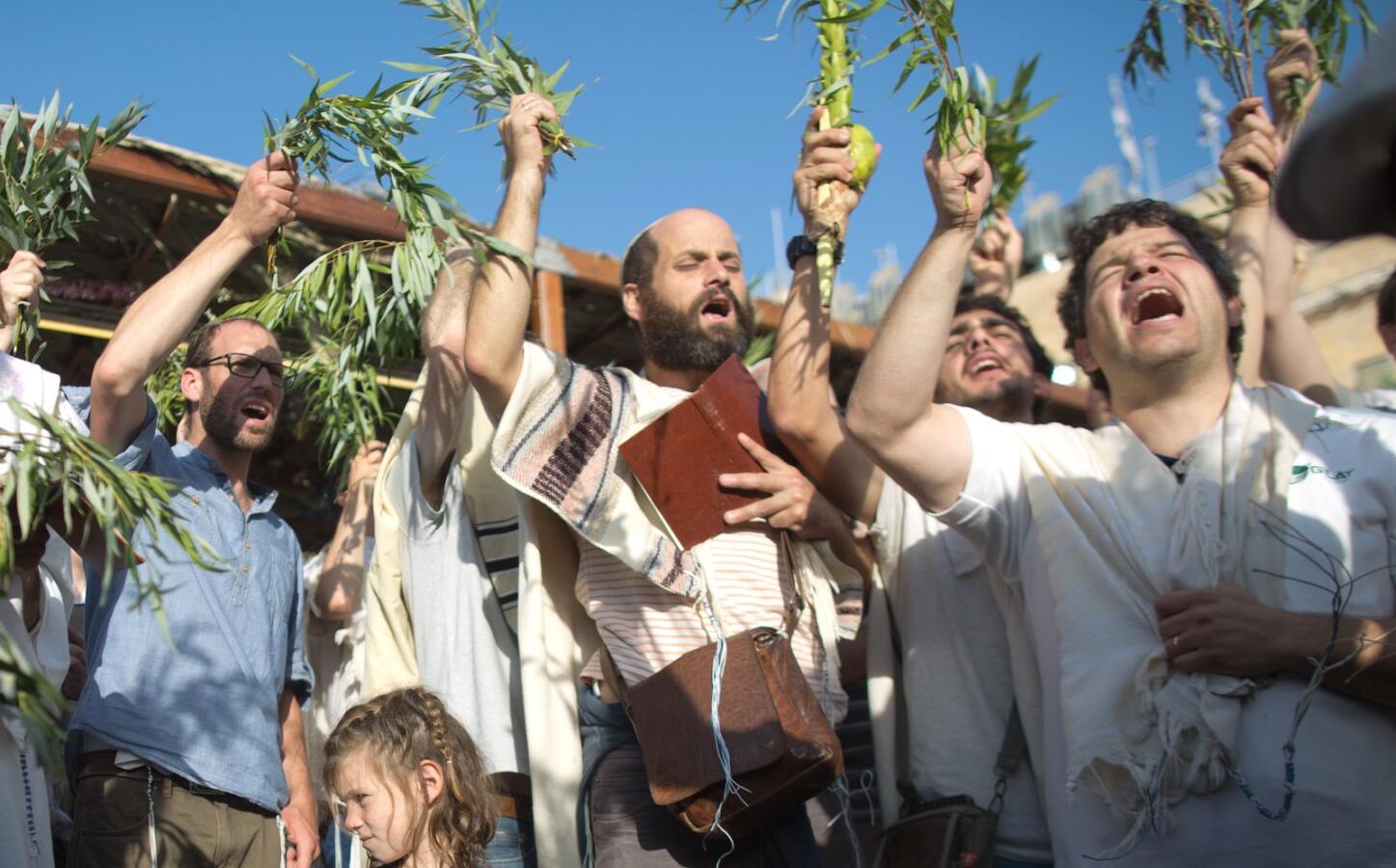“Too much pork — save us!”
These words, penned by beat poet Allen Ginsberg, would annually resound with unlikely enthusiasm in the prayer space of my rabbinical school. The occasion? Hoshanah Rabbah — or in English, The Great Save Us.
Hoshanah Rabbah, which was celebrated yesterday on the final intermediate day of Sukkot, was for us the most powerful prayer gathering of the year. In part, this reflected practicalities. Since most of us rabbinical students were serving congregations during the High Holy Days, this was our main opportunity to pray together at the new year. And since there are no travel restrictions on Hoshanah Rabbah, all the students could attend. Not coincidentally, Hoshanah Rabbah boasts the longest weekday services of the entire year. In addition to a Torah service, Musaf (the additional service) and Hallel (psalms of thanksgiving), the morning service is supplemented by a long recitation of hoshanot — poetic, often acrostic, liturgies of petition that are declaimed by the congregation as it processes in circles round the sanctuary. The Torah scrolls are taken from the ark and held in the center, and participants carry their lulav and etrog before them, shaking them in emphasis at key moments.
Especially in creative settings like a pluralist rabbinical college, the traditional hoshanot are sometimes supplemented by additions from contemporaries like Ginsberg and Leonard Cohen, all underscored by the repeated refrain, “Hoshanah! Please save us!” This reaches a grand culmination when the willow branches from the four species bundles are beaten against the ground — an extraordinary ritual that produces a sound like a rainstorm and the kind of mess that suggests an all-out party has come to an end. If you have never witnessed this, I assure you it’s quite something.

Help us keep Jewish knowledge accessible to millions of people around the world.
Your donation to My Jewish Learning fuels endless journeys of Jewish discovery. With your help, My Jewish Learning can continue to provide nonstop opportunities for learning, connection and growth.
Hoshanah Rabbah is actually one of the most important days of the year — and not only because it occasions rabbinical students yelling “pork!” with unholy glee. In fact, the entire calendar is finessed so that Hoshanah Rabbah cannot land on Shabbat, which would preclude its willow-whacking wildness. This day’s rituals are a linchpin around which everything else revolves.
In Exodus 34:22, the Torah refers to Sukkot as “the turning of the year” — the hinge point between the late summer harvest and renewed prayers for precipitation. The four plant species we shake represent, as Rabbi David Seidenberg explains, four types of ecosystems in the land of Israel: desert (date palm), hills (myrtle), river corridors (willow) and the lowlands (etrog). “Together, they make a kind of map of last year’s rainfall, and together, we use them to pray for the coming year’s rain,” Seidenberg writes.
These prayers for rain are very serious. Although we may be less cognizant of it than were ancient farmers, we too rely on successful harvests, and these depend on the weather. So important are seasonal rains that the Mishnah devotes an entire tractate to the promulgation of public fasts of increasing intensity and frequency if the weeks go by and the rains still do not come. The countdown is calculated from the day after Hoshanah Rabbah.
The four species are also classically identified with four archetypal constituents of community: those with education but no practical positive impact on society; those with positive impact but no learning; those with both; and those with neither. The willows represent the last category, those without the merit of either good deeds or learning. We make the willow so central to the Hoshanah Rabbah service because, as the 19th-century Hasidic rabbi the Sfat Emet explains, those with no special merits are ultimately the ones most dependent on prayer.
Hoshanah Rabbah’s prayers also mark the climax of the High Holiday cycle. As the Zohar tells us, it is on this day that the judgment decided on Yom Kippur receives its final seal, the signature that makes it binding. Fittingly, this sealing occurs on the 21st day of the month, which alludes to the Hebrew word ehyeh, which has a numerical value of 21. Ehyeh is a name for God that means “I will be,” which is why the mystics teach that this day also holds the febrile potency of an unknown future — a day of becoming, of unlimited divine potential. And perhaps this also implies that even when all is signed and sealed, God’s illimitable, expansive power may still deliver us.
Here then, at this nexus point of past, present and future, as we turn our eyes heavenwards and pray for waters of life, might we very well cry, “Save us!”
This article initially appeared in My Jewish Learning’s Shabbat newsletter Recharge on Oct. 7, 2023. To sign up to receive Recharge each week in your inbox, click here.



